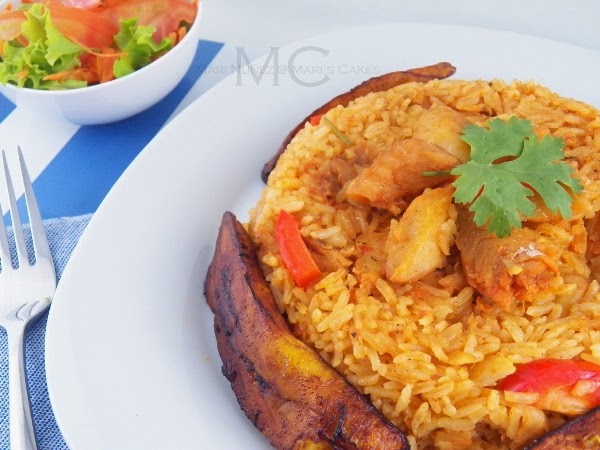
Sancocho, a traditional and iconic Dominican stew, stands as a culinary masterpiece deeply rooted in the country's rich cultural heritage. This hearty dish, comprised of a medley of meats, root vegetables, and starchy tubers, is a culinary symphony often prepared during special occasions, holidays, or chilly days on the island. Its origins seem to blend the indigenous Taíno ajiaco with Spanish stew influences.
Beyond the Dominican Republic, sancocho has found its way into the cuisines of Colombia, Ecuador, and Puerto Rico, each offering their unique spin on this flavorful concoction.
In dedicating this post to my daughters and nieces, my aim is to ensure the continued celebration of the traditional Dominican cuisine within our family. A special shout-out to all Dominicans commemorating Independence Day on February 27th—what better way to mark this occasion than indulging in the essence of our culture through this exquisite dish!
For those readers who have eagerly requested the recipe, your wish is granted! I trust you'll relish the flavors and enjoy replicating this cherished Dominican culinary tradition.

This is my go-to recipe for crafting this delightful dish, albeit in a slightly scaled-down version. Despite my efforts to create a smaller serving of
sweet beans or sancocho, I consistently find myself with a generous pot every time. If you feel that this recipe remains too substantial, feel free to halve or quarter the ingredients. Additionally, you have the flexibility to swap out certain vegetables and meats for alternatives or omit some altogether.
Dominican Sancocho Recipe
Ingredients:
Meats:
1 hen or a chicken
2 pounds of beef
2 pounds of pork meat
2 pounds pork chops (can be smoked)
2 pounds of sausage
Sazón for seasoning meats
2-3 bitter oranges or lemon juice to clean and season
Root and tuber vegetables:
5 rulos or 5 green bananas
4 plantains
3 corns on cob chopped in two to three inches wheels
3 medium-sized potatoes
2 medium yuca
2 carrots
2 pounds of malanga (yautias)
2 pounds of auyama (West Indian pumpkin)
2 pounds yams (ñame)
1 Sweet Potato (batata)
Sancocho stock:
2 teaspoons of oregano
2 onions processed in a blender
1 ½ Tablespoons mashed garlic
1 bunch of cilantro
4 culantro leaves (recao)
2 chicken cubes
2 green peppers cut in half
salt and pepper to taste
juice of 1 sour orange
2 tablespoons vinegar
6 liter of water
Preparation:
The meats:
1. Cut and wash the meat with sour orange or lemon juice. Season with oregano, garlic, onion, salt, and pepper to taste or with
Dominican seasoning and let marinate for at least 30 minutes.
2. In a pot with a little hot oil add a pinch of sugar and let the sugar turn amber in color, then add the chicken and let sauté until it obtains a golden color. Add a little bit of chopped auyama and 2-3 cups water, preferably hot. Cook until chicken has softened and has enough broth, be careful not to overcook since you will add to the sancocho stock later on and it will continue to cook for a few minutes more. Reserve.
3. Cook the remaining meats separately and in the same way as the chicken, striving to keep each one with enough broth. Reserve. If you use smoked pork chop, season with a bit of bitter orange and ground oregano and fry. There is no need to season the sausage, just chop it into 2–3-inch pieces and also fry. Reserve.
Tubers vegetables:
4. Peel all vegetables and cut them into medium-sized pieces. Note: I cut the plantains and into diagonal pieces and the rulos or green bananas in two to make it easier to identify at the time of serving. Leave the vegetables in water with salt to avoid them from darkening until the stock boils to add them into the pot.
Sancocho broth:
5. In large pot or two medium-sized pots place 5 quarts of water, add salt to taste, and reserve the other liter of water to add later if needed. Once the water begins to boil add the two chicken or beef bouillons, plantains, yautias, corn, and onion blended with a bit of water, green pepper, half of the auyama, cilantro, and culantro. When the plantains, yautias, have tenderized a little, add the remaining vegetables and the meats with its broth, reserving the sausage and the other half of pumpkin (auyama) for later.
6. When it begins to thicken, add the rest of the auyama, the sausage, bitter orange, and garlic, and check for salt and pepper. Let boil until the auyama softens, but don't let it thicken too much as it thickens more as it cools in the pot. Serve with
white rice, avocado, and Tabasco sauce.
Yield: Makes approximately 15 servings
Notes:
a) If you like, you can cook the meat the day before and store it in the refrigerator. This will save you time and make preparing this dish a lot easier.
b) If some tuber vegetables become tender too fast, you can remove them from the pot and set aside until the sancocho is almost done. You can then return them to the broth to heat for minutes before removing the pot from the fire.
c) If you have leftover sancocho and you would like to warm it up later or the following day but find that it has thickened a lot, boil some water with a little salt in a separate pot and then add the necessary amount to the pot of stew. Cook until heated completely and has your preferred consistency.
For I know the plans I have for you,” declares the LORD, “plans to prosper you and not to harm you, plans to give you hope and a future. 12 Then you will call on me and come and pray to me, and I will listen to you. 13 You will seek me and find me when you seek me with all your heart. ~ Jeremiah 29:11-13













.jpeg)
















































Keep in touch